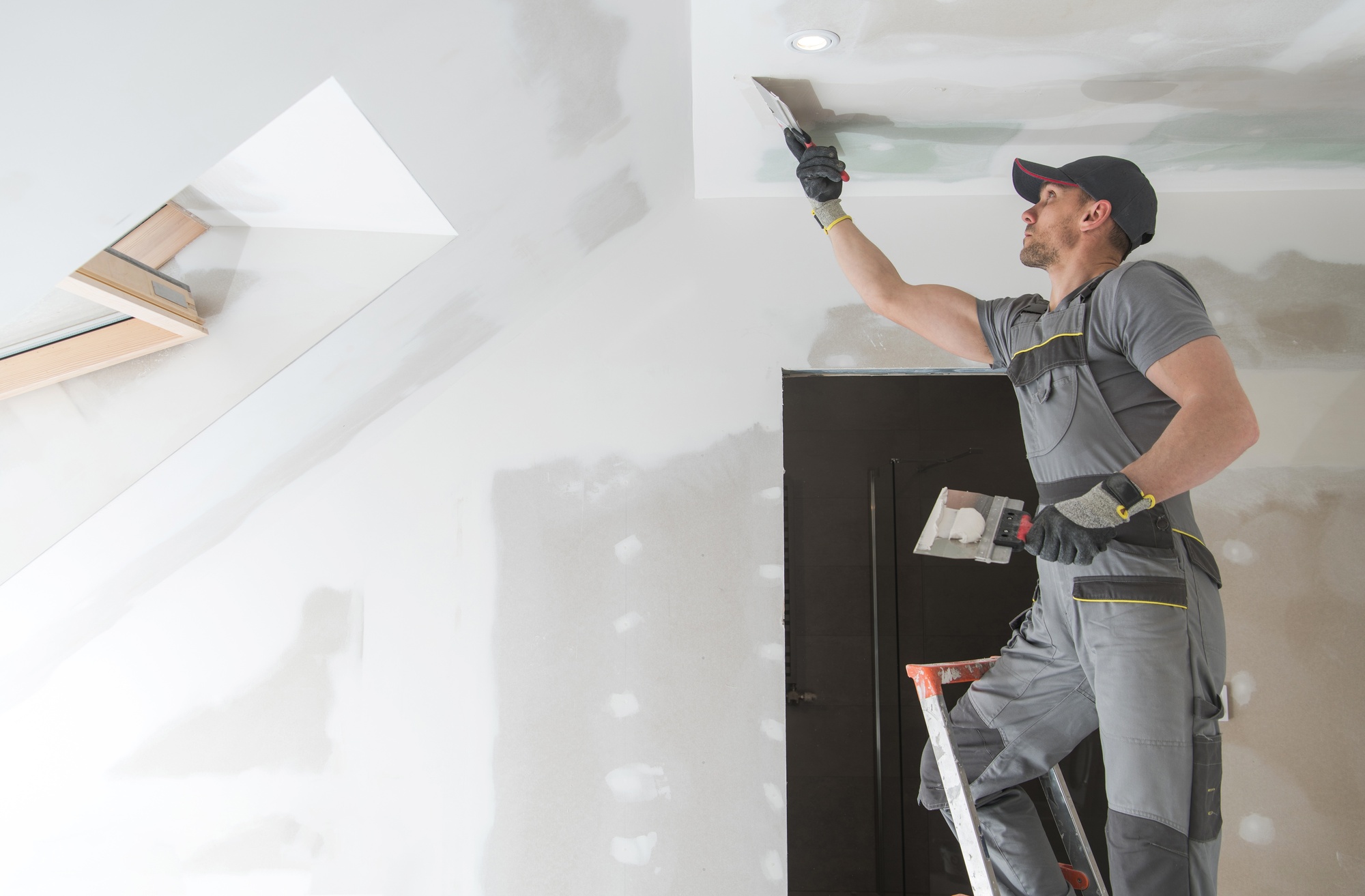Do you have a remodeling project coming up? Are you planning on adopting a different finish for your internal walls? Drywall is a finish you should consider.
What do you need to install the drywall finish? Here are the drywall supplies and tools you’re required to prepare:
1. Drywall Panels
Drywall panels are also referred to as plasterboard or wall board. These panels are made of calcium sulfate dihydrate, which is gypsum.
People adopt drywall panels for their internal wall or ceiling finish. Drywall panels come in different types; the difference lies in the properties.
Common types of drywall panels are:
- White drywall has no special features.
- Green drywall is moisture-resistant since its surface is made of wax.
- Blue drywall is water and mold resistant.
- Purple drywall is water, mold, and mildew resistant.
- Type X drywall is fire-resistant.
It’s important to consider your needs while choosing your ideal drywall panel. The installation location should guide you. Where there’s moisture present, opt for the green drywall.
As you seek special properties for your drywall, know that they directly affect the costs of the panels. The more the features, the more you’ll pay. Click here for more on what you’ll likely find as you shop for drywall panels.

2. Joint Compound
Joint compound is also referred to as mud. It’s a paste made from gypsum white powder and water. You’ll use this paste to seal joints between the drywall sheets.
You’ll come across several types of joint compounds as you purchase them. One is ready-mix, with the other being a dry powder.
The ready-mix comes as a paste, and it’s ready to use. In contrast, the dry powder requires adding water to make a paste. Independently making the paste requires you to be careful and get the portions right.
It’d help to ask your contractor or vendor from whom you’ll source the compound to guide you in the process or have them do it for you.
3. Tape
A tape is a narrow strip you use to fasten or hold something. Concerning drywall, you’ll use tape to hold down sheets of the drywall.
There are two types of tapes you can adopt. One is paper tape, with the other being fiberglass tape. The difference mainly lies in the application technique.
Paper tape is plain, and you’ll require a joint compound. Apply a layer of mud on the drywall sheet and lay the paper tape. The mud will put the tape in place.
In contrast, fiberglass tape is self-adhesive. You don’t need any manipulation to achieve the results you desire.
Drywall Screws
Screws aid in the fastening of materials and items against a surface. In this case, you’ll fasten drywall panels to their backing (mostly wood or metal).
With drywall being a finish, you want to achieve a smooth, seamless finish without bumps or dents. Drywall screws will help you achieve this, unlike normal nails.
As you buy your drywall screws, ensure the following:
- The screws are 1-5/8 inches long. It’s the ideal length for panels, approximately 1-2 inches thick. You can use this proportion to determine the length you require if your panels are thicker than two inches or thinner than one inch.
- The screws are coarse and not too smooth. Coarse screws provide a better grip, holding the drywall panels in place, even over time.
- The screws are coated with phosphate. It ensures the screws don’t rust.
5. Sanding Blocks
As previously stated, you want your drywall finish to be smooth for aesthetic and safety purposes. Hence, sanding blocks are a must-have for your remodeling project.
As you apply the joint compound, it’ll likely pour over the seams. The sanding blocks will help you remove the excess joint compound, ensuring a perfect finish.
A mesh drywall sander is an alternative you can use for stuck joint compound. The sander has a point where you can attach a pole. Therefore, you can remove excess mud in high places like the ceiling and top of the walls.
6. A Dust Mask
A dust mask is a paper pad you hold against your nose and mouth using rubber or elastic straps. It provides comfort when dealing with nuisance dust that’s non-toxic.
Drywall involves a lot of dust, especially due to the gypsum. The mask comes in handy if you’re independently mixing the dry powder with water to make a paste. Also, sanding entails a lot of rubbing, which produces a lot of dust.
Too much inhalation of such dust increases the possibility of getting respiratory illnesses like coughs and asthma. Henceforth, invest in a dust mask. Ensure the mask fits you snugly without any discomfort. Buy high-quality dust masks for optimum protection too.
Conclusion
As seen above, you don’t require a lot of drywall supplies for a drywall remodeling project. All you require is the drywall and jointing material, as well as safety wear for your protection. The discussion above has detailed more on this. Using the insight herein as a checklist as you prepare for your next drywall remodeling project is best.
